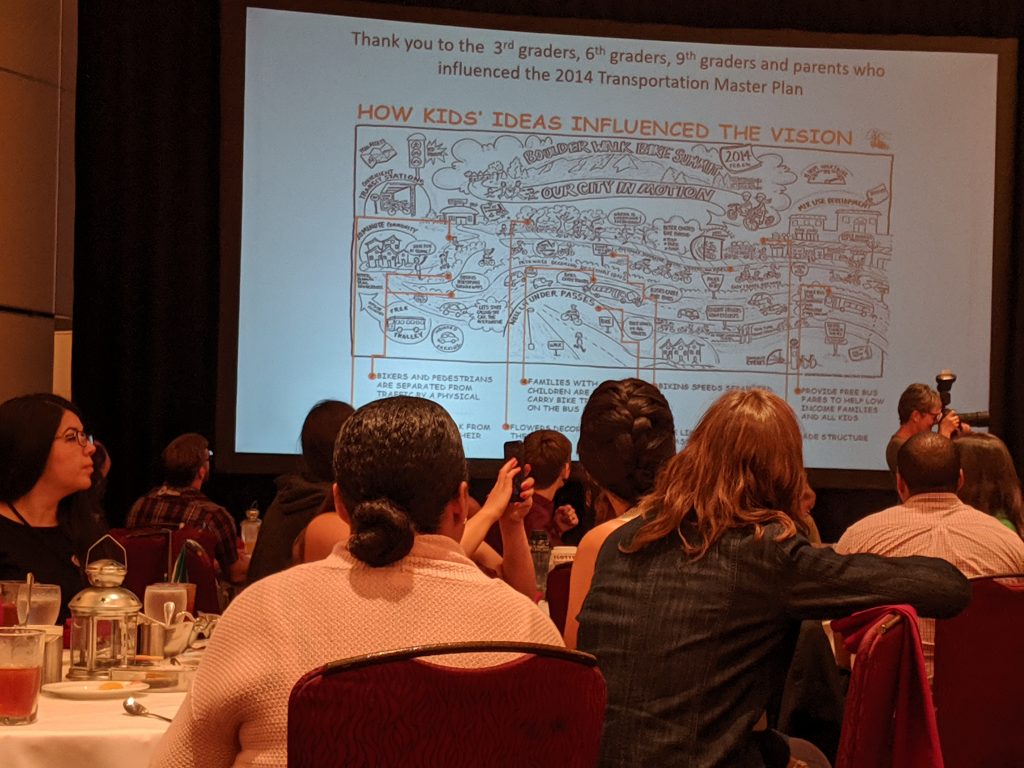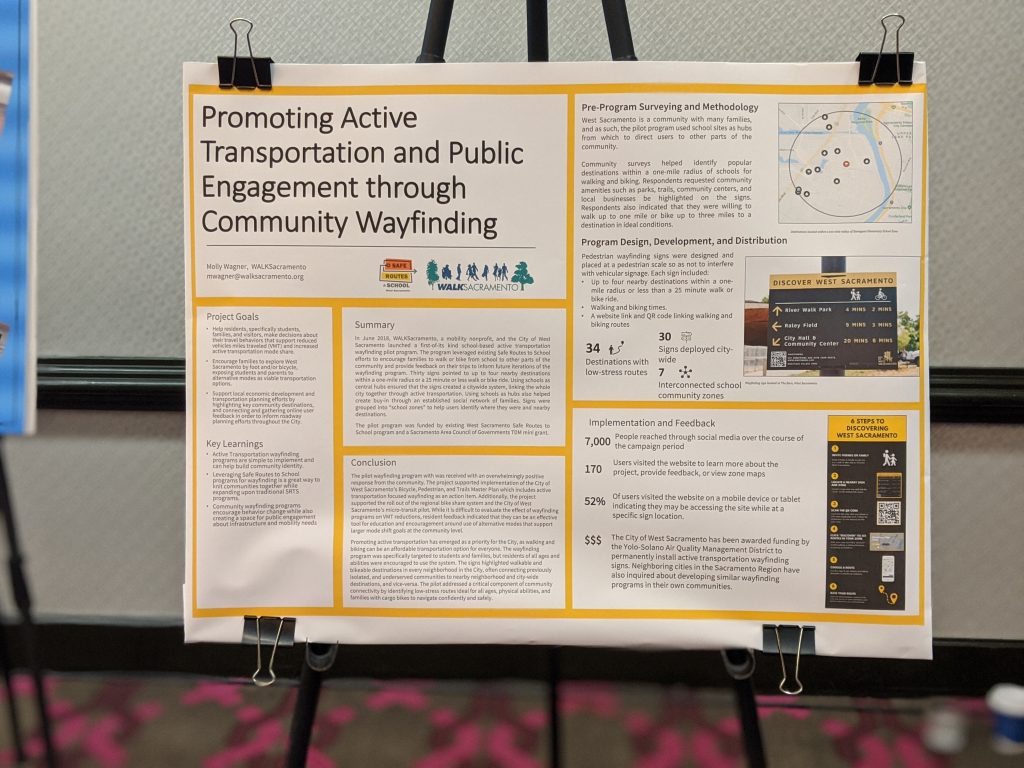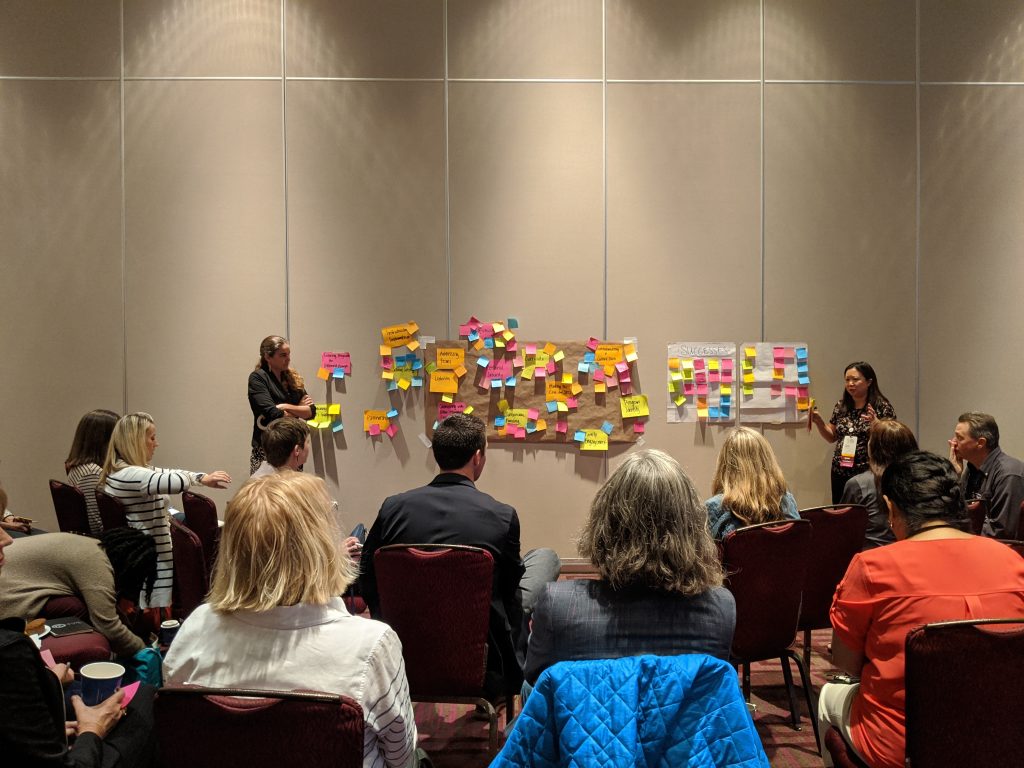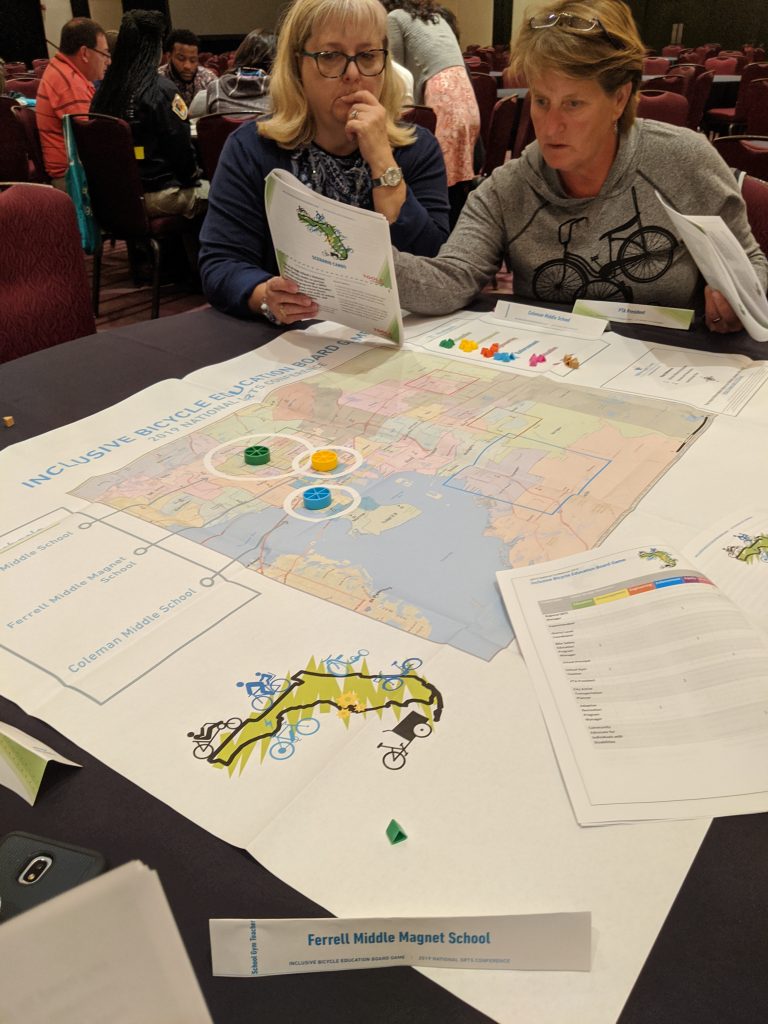The Safe Routes to School Conference in Tampa, FL last month consisted of many small group discussions around how do we sustain mature programs, prevent burnout, and tackle generations of inequitable funding distribution. However, if there is one takeaway that had the most profound impact it was this: none of us are doing enough to include students in the process. We are planning and developing programs for students but programs are not planned and developed by students.
Day 1: The Big Takeaway
The opening plenary speaker, Mara Mintzer of Growing up Boulder made the case for why we must include children and young people in the planning and development of programs not just for Safe Routes to School, but in every planning effort. She ended her talk with leaving the audience with 5 key principals of Engagement:
- Go where the children are.
- News Flash: They aren’t spending their day playing at City Hall
- Use a variety of methods to engage a variety of
learning styles.
- There is so much data out there to support different learning styles. When working with youth – forget using a PowerPoint or lecture style format. The WALKSacramento staff constantly reevaluates programs to ensure we create a fun and interactive environment as much as possible where students get to lead the conversation and have an opportunity to embrace play while we all get to learn something new.
- Use a mix of approaches including photography, poetry, posters, mapping tools, etc. that can engage a large span of learning styles.
- Make Engagement asset based
- Recognize that people are experts in their own lives and they know their community better than any outsider. Identify cultural opportunities you can tap in to. Mara gave an example of a project where children made Nicho Boxes to show objects and writings that were important to them and were culturally relevant to their community. Not surprisingly, students filled the boxes with references to nature, spending time outside, and family. Another personal favorite of mine is using the age old tradition of storytelling. Children conduct interviews their elders to see what they loved about growing up – specifically as it relates to transportation or other topics. (Check out Story Corps for more information, inspiration, and resources for starting your own interview project. Doing a Story Corps style project has always been a dream of mine – so if you are interested in getting this started in your community, let’s partner!)
- Be transparent about process, outcomes, and
timelines
- Long term change is called long term for a reason. It’s incredibly important to be honest about where you are in the process and how long it is going to take to get to where you want to be. While, I would love to be able to say we can get huge amounts of funding and meet every person’s wishlist of ideas, the reality is often much longer and sometimes painful but if you are honest from the very beginning about your process, the timeline, and continue to create inclusionary planning processes that build capacity of residents, residents will be much more receptive, and in the end your product will reflect what the community actually wants and needs.
- Reflect, evaluate, adapt
- Pre and post surveys are important, of course, but there is a lot that happens in between. Planning, engineering, communication, and values have changed so much over the last couple of decades so we must ensure that we are agile, are open to feedback, ready to change it up when something isn’t working.
It is not until we begin to follow these principals of engagement that we will see real transformation in communities that is relevant, builds capacity for residents, and provides access to opportunity for generations to come. I walked away from Mara’s talk feeling proud that the WALKSacramento team has embodied these principals for the 20 years we have been in existence. However, I also walked away recognizing there is so much more room to include youth in the conversation, and they are absolutely ready to join in.
Day 2: The Elephant in the Room: Equity, Diversity, and Inclusion in the Built Environment
On Day 2 the plenary speaker, Shavon Arline-Bradely, founding Principal of R.E.A.C.H. Beyond Solutions LLC and the Co-Founder of The Health Equity Cypher Group spoke on: The Elephant in the Room: Equity, Diversity, and Inclusion in the Built Environment”. Shavon immediately addressed the difference between community outreach and community engagement.
- Community outreach is the old school way of a minimum amount of touch points about a project happening in a community (a flyer, meeting at City Hall).
- Community engagement on the other hand, is truly about getting the residents, including children, involved from the start – before you even have a plan and then continuing to create champions throughout the process to ensure the end product is truly reflective of the community’s needs and desires.
I am happy to say that over the last two years, I have heard other speakers also point out this difference and more excitingly, I am seeing funders move to true engagement requirements over traditional outreach, however still another area we have so much more room to improve upon.
If I had to choose only two takeaways from Shavon, they are this:
First, Consider the weight of the term “bus” in reference to walking school bus programs in your communities. Something that had never crossed my mind was that depending on what where you are, the term bus can be incredibly weighted. In many places, with a car ownership being part of the American Dream, promoting a “bus” feels backwards. Even if a walking school bus is a fun and healthy program – the historical context of it may not be seen as such based on different generations. So, how do we change the narrative of a walking school bus? Is there a better word?
Secondly, my favorite piece of advice she gave was “Do not ever have a meeting without students”. Again, sticking with the theme that we must include youth in everything we do… afterall they are the future and deserve to have a say what it looks like.
I’m excited for what 2020 has in store at WALKSacramento as we continue to challenge ourselves to further build youth capacity, especially high school students in Safe Routes to School projects, TDM programs, and Health in the Built environment programs. Stay tuned for more updates on how we are engaging youth in the Sacramento Region and if you are interested in working with us and adding more creative engagement approaches to your projects – send us an email: contact@walksacramento.org
Thank you to Safe Kids California for sponsoring my attendance at the Conference. I also had the opportunity to share our Wayfind West Sacramento project during Wednesday’s poster session. Check out the case study here.



